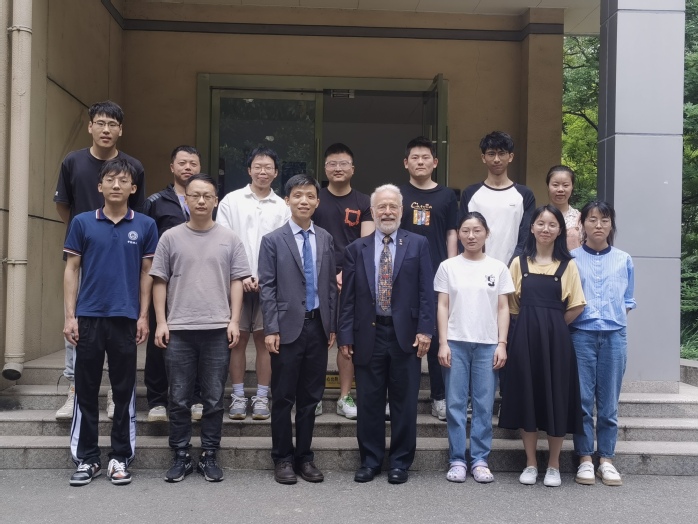
Renowned scientist Professor Héctor D. Abruña recently visited our lab at the campus, sparking excitement and fostering knowledge exchange within our research group. Prof. Abruña, an esteemed authority in energy materials, visited on May 20th, 2023, leaving a profound impact on our group members.
During his visit, Prof. Abruña engaged in dynamic discussions with us, sharing invaluable insights and expertise acquired from his extensive research experience. The focus of the discussions centered around cutting-edge advancements in energy materials, particularly batteries and fuel cells. His feedback and instructions were both insightful and inspirational, driving further progress and innovation within the lab.
We want to extend sincere gratitude to Prof. Abruña for his visit and the invaluable knowledge shared during the discussions. His presence not only encouraged future potential collaboration between the lab and Prof. Abruña but also inspired researchers and students alike.
Our lab remains dedicated to fostering an environment that encourages interdisciplinary collaboration and groundbreaking research. Prof. Abruña's visit served as a powerful reminder of our commitment to pushing the boundaries of scientific exploration and making a positive impact on society.
About Prof. Abruña
Professor Hector Abruña, Émile Chamot Professor of Chemistry at Cornell University. Professor Abruña is a native of Puerto Rico. He got his degree at the University of North Carolina at Chapel Hill and was a postdoc with Allen Bard at the UT Austin. He joined Cornell in 1983. He was Chair of the Department of Chemistry and Chemical Biology from 2004-2008.
He is an internationally recognized leader in electrochemistry and analytical chemistry. His research focuses on energy materials for batteries, fuel cells and electrolyzers. He is best known for pioneering the development of operando techniques for the study of electrochemical interfaces with emphasis on X-ray based methods, transmission electron microscopy (TEM) and differential electrochemical mass spectrometry (DEMS).
He is a member of the National Academy of Sciences and the American Academy of Arts and Sciences. He has been the recipient of numerous awards including a Presidential Young Investigator Award, A. P. Sloan Fellowship and many others. He is the co-author of over 570 publications (h-index =103) and has given over 675 invited lectures world-wide. He considers his 62 Ph.D. students and 75 Postdocs, to date, as his most important professional achievement.



